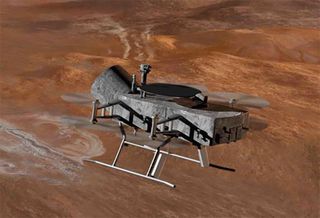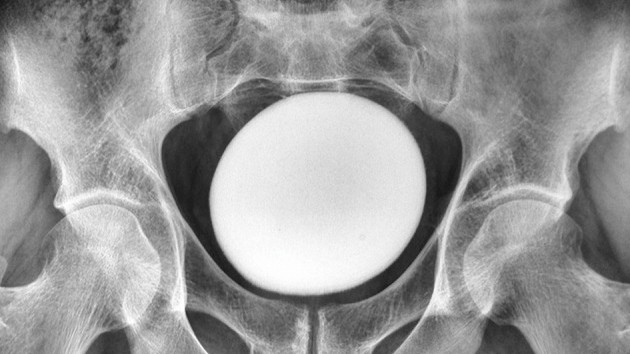
Nola Taylor Tillman
Nola Taylor Tillman is a contributing writer for Live Science and Space.com. She loves all things space and astronomy-related, and enjoys the opportunity to learn more. She has a Bachelor’s degree in English and Astrophysics from Agnes Scott college and served as an intern at Sky & Telescope magazine. In her free time, she homeschools her four children.
Latest articles by Nola Taylor Tillman

Solar Eclipse Day Craziness Could Resemble the Zombie Apocalypse — Are You Ready?
By Nola Taylor Redd published
Only one month left until the Great American Eclipse passes across the continental United States.

Flood Facts, Types of Flooding, Floods in History
By Nola Taylor Redd published
Wherever rain falls, a flood can occur.

'Dragonfly' Drone Could Explore Saturn Moon Titan
By Nola Taylor Redd published
A relocatable lander could explore the hazy skies of Saturn's intriguing moon Titan, according a new mission proposal.

After Dino-Killing Asteroid Impact, Life Re-Emerged Quickly
By Nola Taylor Redd published
Life re-emerged at the site of the dino-killing asteroid's impact at roughly the same time it began to thrive around the globe, despite suffering from worse conditions.

Geoengineering Earth's Atmosphere: How It Could Affect Astronomy
By Nola Taylor Redd published
Creating clouds in the sky or redirecting sunlight to bring down the Earth's temperature could have an effect on astronomy.

'Star Trek' Science: Why Vulcans (and Other Aliens) Look Like Humans
By Nola Taylor Redd published

Weird Red Spot on Pluto Moon Explained
By Nola Taylor Redd published
Pluto may be sharing its atmosphere with its largest moon, Charon, creating the visually striking red spot at the satellite's north pole.

Are Black Holes Really Black?
By Nola Taylor Redd published
A black hole simulated in a lab points toward "no."

Galaxy Stirring Revealed by Doomed Japanese Spacecraft
By Nola Taylor Redd published
Before it died, Japan's Hitomi satellite revealed surprising insights about how black holes stir up gas inside enormous collections of galaxies.

Saturn Moon Enceladus' Plumes May Resemble Earth's 'Lost City'
By Nola Taylor Redd published
Saturn's intriguing moon Enceladus could resemble Earth's Lost City, a network of hydrothermal vents in the Atlantic Ocean where life survives despite cold and darkness.

Odd 'Dark Hydrogen' May Lurk Within Jupiter, Other Giant Planets
By Nola Taylor Redd published

E.T. Phones Earth? 1,500 Years Until Contact, Experts Estimate
By Nola Taylor Redd published
Aliens may be mediocre just like Earthlings, which could explain why humanity hasn't heard from advanced civilizations yet.

Alien Life? Radiation May Erase Mars, Europa Fossils
By Nola Taylor Redd published
Radiation from beyond the solar system may destroy any organic fossils lying on the surface of Mars or Jupiter's icy moon Europa.

Tornado Facts: Causes, Formation & Safety
By Nola Taylor Redd published
These violent storms wreak havoc and cost lives. They can occur anywhere at any time.

Mars Life Hunt: Could Basin Host Remains of an Ancient Biosphere?
By Nola Taylor Redd published

Not So Fast: Discovery of Radio Burst Source May Be Flawed
By Nola Taylor Redd published
A paper published Feb. 24 claiming to have located the source of a mysterious type of energetic radio burst may have a fatal flaw, some scientists say.

Palm-Size Satellites Could Hunt for New Alien Worlds
By Nola Taylor Redd published
Tiny satellites could hitch a ride into orbit and spot alien worlds from afar, new research suggests.

Traces of the First Stars in the Universe Possibly Found
By Nola Taylor Redd published
An enormous gas cloud in the early universe has a very small amount of the heavy elements that would form in later stellar generations, suggesting that it was "polluted" by the very first stars.

Advanced Alien Civilizations Could Live in Globular Star Clusters
By Nola Taylor Redd published
Once life gets started in dense stellar groups, it could quickly go interstellar, thanks to old stars and close neighbors.

Cosmic Lightsaber Slices Through Clouds in Awesome New Image
By Nola Taylor Redd published
A cosmic lightsaber, trillions of miles long, slices through the dark clouds of dust and gas that surround it in a new image captured by NASA's Hubble Space Telescope.

Mars May Become a Ringed Planet Someday
By Nola Taylor Redd published
Mars may one day have rings like Saturn's, if the Red Planet manages to completely crush its innermost moon, Phobos.
Get the world’s most fascinating discoveries delivered straight to your inbox.




